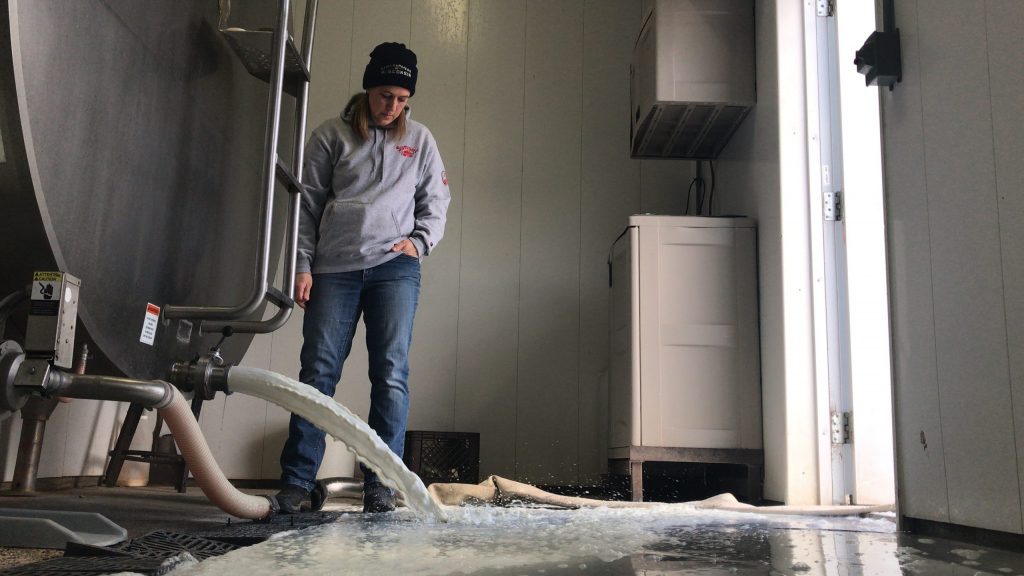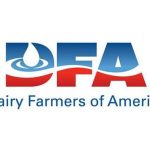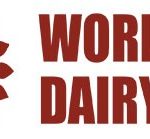
After weeks of dumping milk, the dairy industry will receive government aid from the United States Department of Agriculture (USDA).
The USDA announced a $19 billion relief program to help farmers and ranchers across the country. The dairy industry will be part of a $3 billion package aimed at assisting fresh produce, dairy, and meat industries.
For farms like Sunset Dairy Farm, it’s a welcomed relief package after dumping over 10,000 gallons of milk for the last two weeks.
“It’s not just frustrating for [the consumer], it’s frustrating on our end,” Karen Hughes, Herd Manager for Sunset Dairy Farm, said. “The biggest thing was the shift in demand overnight. It was going to restaurants and schools, and now a lot of people are doing their grocery shopping, and the shelves and stores aren’t full. It’s frustrating to go shopping for the kids, and the milk, the yogurt, and butter isn’t there like it was before.”
As a sixth-generation dairy farmer, Hughes says she’s never had to dump milk. So when she saw community efforts to help in the rebound, it provides optimism in a struggling market. Last week, The Hunger Task Force committed $1 million to help buy back milk for food pantries.
“It will help,” Hughes said. “It may not be a huge effect, but every little bit helps.”
Now, the USDA’s effort will put even more food and milk on the shelves of food banks, community and faith-based organizations, and other non-profits. So the milk will no longer be wasted.
However, at Sugar Creek Dairy in Elkhorn, their future is dependent on what happens in New York City.
A majority of their milk goes to making cheese used at pizzerias and Italian restaurants in New York City, the epicenter for coronavirus cases in the United States.
“That market in New York is dead,” Rick Adams, Owner of Sugar Creek Dairy, said. “It’s closed. Shut down. That was one of the prime markets.”
At Sugar Creek Dairy, they’re being asked to dump some 20 percent of their milk for the month. Rick says that works out to roughly $60,000 a month. He doesn’t know how much his farm will receive from the USDA aid but says it’s appreciated.
“I don’t know if it will make us whole, but I think it will bridge the gap over the dumped milk and lost income,” Adams said. “It’s devastating to the Ag community right now. Hopefully, it will help us. I don’t know the particulars, but we can use it. We hope this gets over as soon as possible. It’s not sustainable. Agriculture can’t sustain this very long.”
Adams could end up losing more than 30,000 gallons of milk as a result of this. Being recouped will allow them to continue with their labor of love.
“We care about everybody,” Adams said. “If we get help from the government, it will be appreciated. We care about the community. There are a lot of kids in Milwaukee, right? There are 75,000 who are in Milwaukee Public Schools that get breakfast and lunch every day. I’d love to send that product there.”
Adams says his cheese cooperative is in the works to figure out how to transition from cheese to fluid milk. So kids, like those in Milwaukee Public Schools, can enjoy their milk.
And he can continue working with his 1,100 cows every single day, around the clock.
“We could fight another day,” Adams said. “We could survive this. We don’t really want a handout at all, but right now, we want to fight to see another day. We have generations of experience on the land, and we don’t want to lose that.”
The USDA says $100 million per month will be spent on purchasing dairy products for food banks.

























